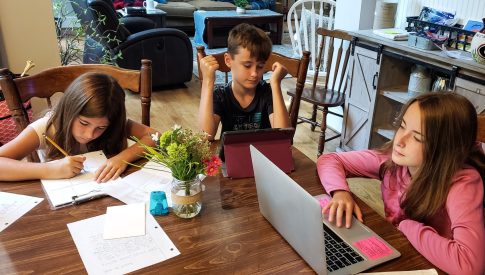English - Higher Index
Online Lessons for Students in Scotland learning Higher English
- RUAE
- Critical Essay
- Scottish Set Text
- Portfolio
- Internal Assessments
Connotation is the use of a word to suggest a different association than its literal meaning, which is known as denotation. Connotations can be either positive, negative, or neutral. Writers often use different connotations to inject multiple layers of meaning into a word, phrase, or passage.
When considering the language used by a writer, you can think of another word or expression the writer could have used. This will then allow you to compare the word used against an alternative and consider what the advantage was of using the word selected for the text. In this lesson explore how to answer word-choice questions.
Imagery is a feature of written and spoken language that occurs whenever someone has chosen to use language in a non-literal way. It is used to heighten the effect of language and is often an extension of word-choice. In this lesson explore how to answer imagery questions.
Structure, in this context, means how a sentence is built up or constructed. In this lesson learn how to answer sentence-structure questions.
A linking question will always ask you to show how a sentence, or part of a sentence, creates a link. That is how it joins paragraphs or ideas together. This means you need to show how that sentence links to the earlier paragraph or idea and how it links forward to the next idea or paragraph. In this lesson learn how to answer linking questions.
Tone refers to the attitude that a writer conveys towards a subject. A writer may be passionately for or against a particular topic and express this through various means. In this lesson learn how to answer tone questions
The primary purpose of an introductory paragraph is to pique the interest of your reader and identify the topic. In this lesson learn what makes an introductory paragraph effective.
In this lesson learn what makes a conclusion paragraph effective.
In this lesson develop your ability to understand and evaluate non-fiction texts. Summarise key ideas from non-fiction texts. Consolidate what you have learnt from Reading for Understanding, Analysis and Evaluation to assist you with the 5-mark question.
Certain literary techniques are used to increase the dramatic tension in a novel or short story. In this lesson revise the definition of the main dramatic techniques and identify examples in context.
Sometimes stylistic prose techniques are used to add depth and character to the story. Perhaps the two most common techniques are the use of simile and metaphor, though other techniques exist as well. In this lesson revise the definition of the main prose techniques and identify examples in context.
In this lesson revise the definition of the main poetry techniques and identify examples in context.
In this lesson revise the definition of the main film and television techniques and identify examples in context.
A critical essay is a form of academic writing that analyses, interprets, and/or evaluates a text.
It is important to plan your critical essay before you start writing. An essay has a clear structure with an introduction, paragraphs with evidence and a conclusion. In this lesson identify what information to include in a critical essay. Improve your ability to plan extended pieces of writing.
An introduction should focus directly on the essay question or title and aim to present your main idea, in your answer. In this lesson consolidate what you know about writing an essay introduction.
It’s important to think about how you should structure your paragraph. In this lesson identify strengths and targets for exemplar paragraphs.
A conclusion is the final paragraph of your essay. It should tie all the loose ends of your argument together. In this lesson consolidate what you know about writing conclusions.
Certain literary techniques are used to increase the dramatic tension in a novel or short story. In this lesson revise the definition of the main dramatic techniques and identify examples in context.
Sometimes stylistic prose techniques are used to add depth and character to the story. Perhaps the two most common techniques are the use of simile and metaphor, though other techniques exist as well. In this lesson revise the definition of the main prose techniques and identify examples in context.
In this lesson revise the definition of the main poetry techniques and identify examples in context.
In this lesson develop your understanding of the Scottish Set Text part of the exam. Consolidate your knowledge of language and what you know about SST


"It's bright and colourful, easy to read, and extremely easy to use unlike most textbooks or online learning websites" Daisy, S3 PupilSign Up & Learn Today

